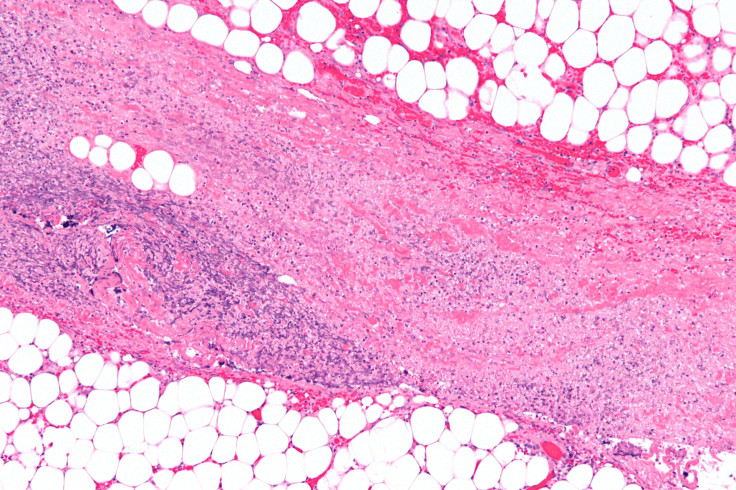Florida Man Infected With Flesh-Eating Bacteria After Getting Bitten By Relative At Family Event
KEY POINTS
- The man got the bite while trying to intervene in a fight between two people
- Necrotizing fasciitis may enter the body through a break in the skin
- It's believed that the bacteria entered his body through the bite
A man from Florida has survived after getting infected with flesh-eating bacteria, which he may have gotten when he was bitten by a relative during a family gathering.
It was in February when 52-year-old Donnie Adams from Tampa Bay, Florida attended the event, according to Tampa Bay Times. As sometimes happens at such gatherings, tensions began to flare between two family members. And when Adams tried to intervene, he ended up getting bitten by one of his relatives on the leg.
Adams went to the emergency room to get antibiotics and a tetanus shot. However, the pain persisted and his condition only worsened. Three days later, when he was already struggling to walk, Adams rushed to the emergency room and found out he had necrotizing fasciitis, or what most people may know as flesh-eating disease.
Necrotizing fasciitis is a rare infection that may enter the body through a break in the skin and affects the tissues under the skin. It can spread fast in the body and may even lead to death. This is why acting fast is "key" when it comes to necrotizing fasciitis, according to the U.S. Centers for Disease Control and Prevention (CDC). "Prompt" surgery, together with antibiotics, is important in stopping the infection in its tracks.
In Adams' case, the infected flesh reportedly ran from the area around his knee to his groin, with 70% of the tissue in front of his thigh having to be removed, Tampa Bay Times reported. He even had another surgery to remove more infected flesh.
The source of the infection, doctors believe, was the bite.
Indeed, human mouths are home to many microbes. However, exactly how the bacteria ended up entering his body is unclear. It's also possible that the bacteria infected the wound later on after the bite.
Various types of bacteria may cause necrotizing fasciitis but Group A strep is believed to be the most common cause of necrotizing fasciitis, as per the CDC. So far, there is no vaccine for Group A strep infections yet.
Some of the most important way people can prevent getting infected includes washing one's hands often and taking proper care of wounds, especially ones that break the skin. These wounds should be cleaned with soap and water and covered with bandages. However, deeper and more serious wounds are best left to the care of doctors.
Anyone who experiences early symptoms of necrotizing fasciitis should consult a doctor immediately. These include a red, warm or swollen area that's spreading fast, severe pain and fever. Later symptoms may include changes in the color of the skin, the development of ulcers or black spots on the skin or pus getting discharged from the area.
"(I)t is important to start treatment as soon as possible," the CDC noted. "Therefore, doctors may not wait for test results if they think a patient might have necrotizing fasciitis."
As for Adams, he reportedly expressed gratefulness for surviving the ordeal and the hope that his experience would encourage others to consider having wounds checked by medical professionals.

© Copyright IBTimes 2024. All rights reserved.












